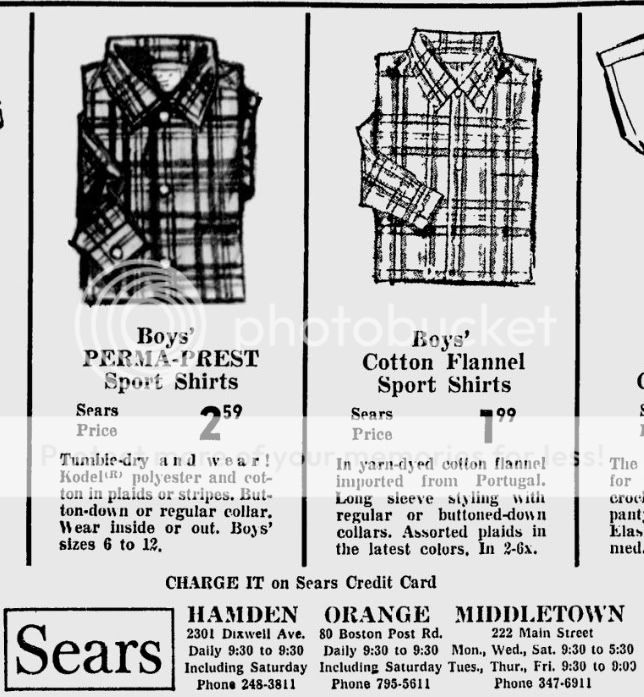
(1967)
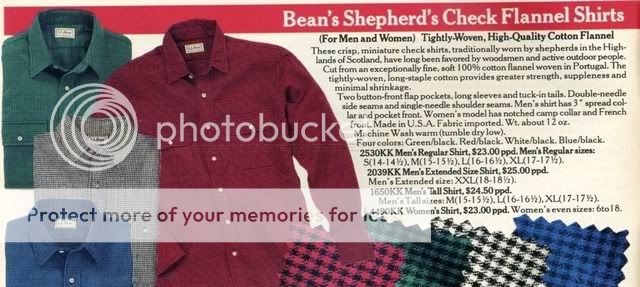
(1989)
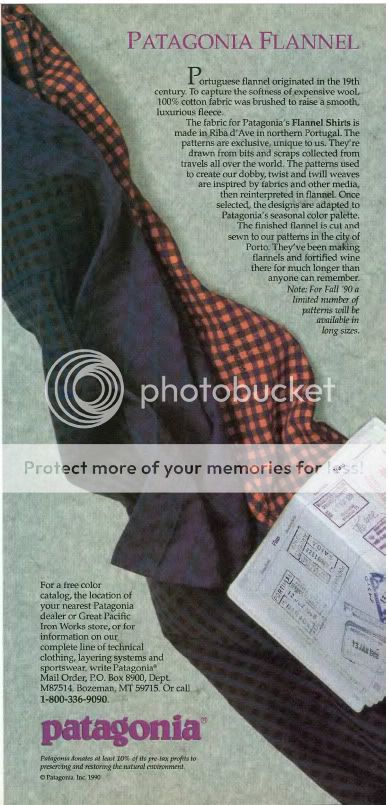
(1990)
A part of the look? Kind of reminds me of chambray, in that it started firmly in department store territory, but somehow ended up the darling of L.L. Bean, Lands' End, Patagonia, etc. by the 90s. (Lands' End devoted a catalog essay to it, for instance.) When did the transition happen? The 80s? Who started it? What made (makes?) the Portuguese mills so special?
Perhaps it was an issue of steady erosion? Wool flannel to Viyella to 80/20 to all-cotton and then off to Portugal? (Why Portugal???)
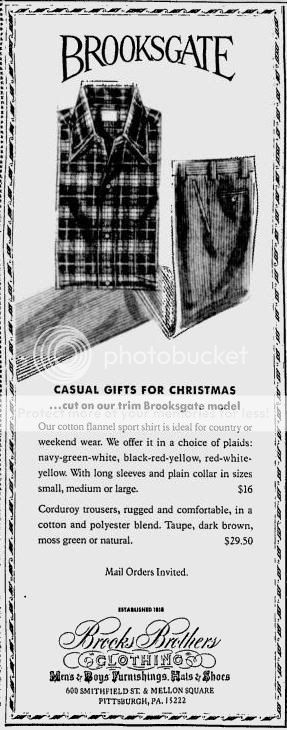
(1978)
American-made(?) Brooksgate cotton flannel was an an alternative to the 80/20 Brooksflannel by the late 70s.
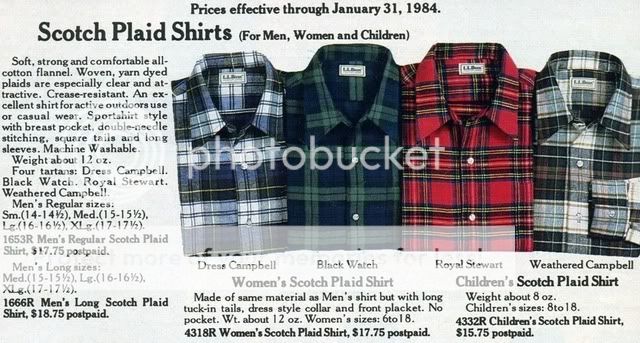
(1983)
L.L. Bean's Scotch Plaid shirts were another early cotton flannel source. (Late 70s? Early 80s?)
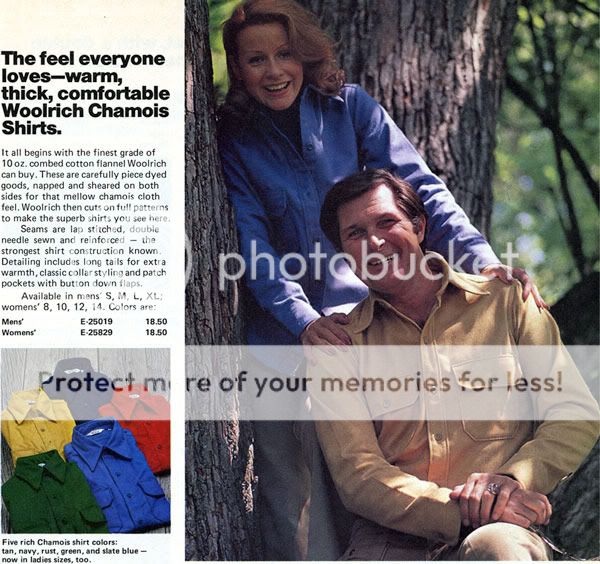
(1976)
Woolrich (via Lands' End) suggests that the key to cotton flannel's rising position in the world can be traced back to its similarity to Bean's Chamois Cloth.

(1971)
Bean agrees (sort of), then goes off on the special virtues of Chamois Cloth. Are cotton flannel and Chamois Cloth really one and the same, or is there a difference? I'm a little unclear on this... Current L.L. Bean Chamois Cloth shirts use Portuguese fabric.
Was Portuguese flannel always a good (if under-appreciated) option, or did something happen to change the standard opinion?




